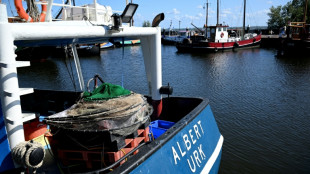

Why Every Pool Owner Needs CPR and First Aid Training
NEW YORK CITY, NY / ACCESS Newswire / April 29, 2025 / Owning a pool offers endless enjoyment, but it also comes with important responsibilities. Safety should always be a priority, as accidents can happen even if precautions are taken. While many pool owners take out a pool loan to finance construction or upgrades-often focusing on features like landscaping, decking, or luxury add-ons-investing in essential safety measures, such as fences, pool covers, and alarms, is just as important. Beyond physical safeguards, CPR and first aid training equip pool owners with life-saving skills, enabling them to be prepared to respond in an emergency, creating a safer environment for everyone.
The importance of pool safety
Pools can be dangerous, especially for young children and inexperienced swimmers. According to the Centers for Disease Control and Prevention (CDC), drowning is one of the leading causes of accidental death in children. Even strong swimmers can get into trouble if they become tired, suffer from a medical emergency or get trapped underwater.
Key safety concerns around pools include:
Drowning risks, especially for children
Slips and falls on wet surfaces
Medical emergencies like heart attacks or seizures
How CPR saves lives
Cardiopulmonary resuscitation, AKA CPR, is a life-saving technique used when someone's heart stops beating, or they stop breathing. When performed correctly, CPR keeps oxygen-rich blood flowing to the brain and other vital organs until professional medical help arrives.
A trained pool owner could step in immediately, performing chest compressions and rescue breaths to keep the person alive. Without CPR, a drowning victim may not survive by the time emergency responders arrive.
Steps to perform CPR on adults according to the American Red Cross (steps for children and babies vary and can be found on the Red Cross website):
Look around first: Make sure it's safe before helping. Wear gloves or other protection if they are available have them.
Check if the person responds: Tap them and shout, "Are you okay?" Look for breathing or heavy bleeding.
If they don't respond and aren't breathing (or only gasping), call 9-1-1: Get a first aid kit or an AED, or ask someone else to do it.
Lay them on their back on a hard, flat surface. Kneel beside them.
Start chest compressions (CPR): Put both hands in the center of their chest and push hard and fast (at least 2 inches deep, 100-120 times per minute), letting the chest rise back up after each push.
Give 2 breaths: Tilt their head back, lift their chin, pinch their nose, and breathe into their mouth for 1 second (make sure their chest rises); if it doesn't, adjust their head and try again-if it still doesn't work, their airway may be blocked.
Keep going! Do 30 pushes and 2 breaths again and again until help arrives. Use an AED as soon as possible. Try not to stop for more than 10 seconds at a time.
An essential skill alongside CPR: First aid
Beyond CPR, first aid training equips pool owners with the skills to handle common poolside injuries, including cuts, bruises, and broken bones. It also covers how to recognize and respond to heat exhaustion, dehydration, and heart attacks-all of which can occur in or around a pool. Acting quickly before emergency services arrive can prevent minor incidents from becoming serious medical emergencies.
Where to get CPR and first aid training
CPR and first aid courses are widely available through organizations like the American Red Cross, the American Heart Association, and local community centers. Many programs offer both in-person and online training with hands-on practice. These courses are affordable, take just a few hours, and provide life-saving knowledge that lasts a lifetime.
Refreshing skills regularly
CPR and first aid skills can fade over time so it's important for pool owners to refresh their knowledge regularly. Many training organizations recommend renewing CPR certification every two years. Staying updated on the latest techniques ensures pool owners are always prepared to act in an emergency.
Enjoy the pool while staying safe
Owning a pool is a great way to enjoy time with family and friends, but it also comes with the responsibility of ensuring a safe environment. Accidents can happen in seconds, and being trained in CPR and first aid empowers pool owners to respond quickly and effectively in an emergency.
By investing in both physical safety measures and life-saving skills, pool owners can enjoy their pools with greater confidence, knowing they are prepared to protect themselves, their families, and their guests. A little preparation today can make all the difference when it matters most.
SPONSORED CONTENT
About OneMain Financial
OneMain Financial is the leader in offering nonprime customers responsible access to credit and is dedicated to improving the financial well-being of hardworking Americans.
Contact Information:
Name: Sonakshi Murze
Email: [email protected]
Job Title: Manager
SOURCE: OneMain Financial
View the original press release on ACCESS Newswire
J.Gustafsson--RTC


